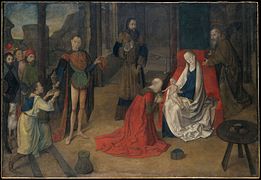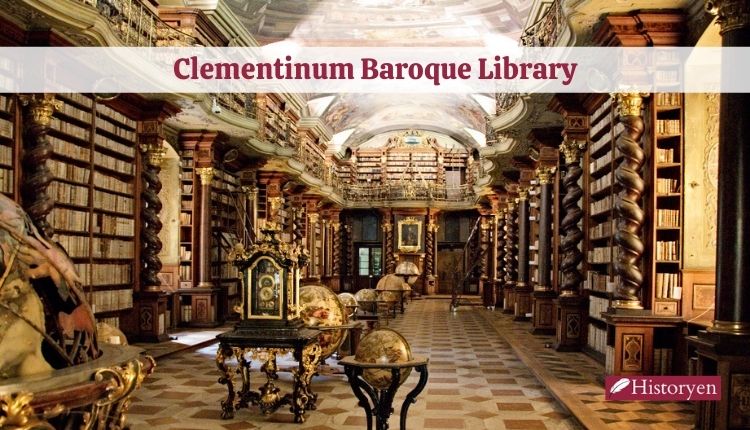Introduction
The Adoration of the Magi is a significant biblical event that holds immense cultural and religious importance. This event, also known as the Visit of the Wise Men, revolves around the journey of the Three Kings or Wise Men from the East to pay homage to the newborn Jesus. The story, depicted in the Gospel of Matthew, captivates believers and art enthusiasts alike. In this article, we will delve into the rich history, symbolism, and cultural impact of the Adoration of the Magi.
The Biblical Account

The biblical account of the Adoration of the Magi is found in the second chapter of the Gospel of Matthew in the New Testament. It recounts the story of wise men from the East who observed a remarkable star in the sky, signifying the birth of a special king. These wise men, often referred to as the Three Kings or Magi, were experts in astrology, astronomy, and interpreting celestial signs.
Intrigued by the appearance of this extraordinary star, the Magi embarked on a momentous journey to find and pay homage to the newborn child. The star guided them westward towards the region of Judea, where the city of Jerusalem, the capital of Israel, was located. It is important to note that the Bible does not specify the exact number of Magi who embarked on this journey; the tradition of three wise men is based on the three gifts they brought.
Upon arriving in Jerusalem, the Magi caused a stir, inquiring about the newborn King of the Jews. This news reached King Herod, who, fearing a potential rival to his throne, called for a meeting with the wise men. Herod consulted the Jewish religious leaders and scholars to determine where the Messiah, the long-awaited Jewish king, was to be born.
Based on the prophecies from the Hebrew Scriptures, the scholars informed Herod and the Magi that the Messiah would be born in Bethlehem, a small town just a few miles south of Jerusalem. Herod secretly requested the Magi to find the child and report back to him, claiming that he also wanted to worship the newborn King.
As the Magi left Jerusalem, the star reappeared and led them directly to Bethlehem. The star came to a standstill over the place where the young child, Jesus, was with his mother, Mary. Overwhelmed with joy and awe, the wise men entered the house and presented their gifts to the child: gold, frankincense, and myrrh.
After their encounter with the infant Jesus, the Magi received a divine warning in a dream, cautioning them not to return to Herod and disclose the child’s location. Obeying the message, they departed for their homeland through an alternative route.
This biblical account of the Adoration of the Magi highlights the journey and homage of the wise men to the newborn Jesus, emphasizing their recognition of his divine significance. It showcases the universal nature of Jesus’ message, transcending borders and cultures, as represented by the Magi from the East. Their visit also carries a symbolic meaning, signifying the revelation of Jesus to the Gentiles and the inclusion of all nations in the divine plan of salvation.
The biblical account of the Adoration of the Magi serves as a powerful testament to the profound impact and timeless significance of this remarkable event.
The Significance of the Three Kings

The Three Kings, also known as the Magi or Wise Men, hold great significance in the story of the Adoration of the Magi. They are often depicted as distinguished figures who traveled from the East to pay homage to the newborn Jesus. Here are some key points highlighting the significance of the Three Kings:
- Representing Different Regions and Backgrounds: The Three Kings are believed to have come from different parts of the world, representing diverse regions and cultures. Tradition holds that Melchior came from Persia, Caspar from India, and Balthazar from Arabia. Their presence symbolizes the universal appeal of Jesus’ message and the inclusion of all nations in the divine plan of salvation.
- Recognition of Jesus’ Kingship: By offering gifts of gold, the Three Kings acknowledged Jesus’ kingship. Gold was a precious metal associated with royalty and wealth, signifying Jesus’ sovereignty and divine authority. Their act of presenting gold demonstrated their recognition of Jesus as a king above all earthly rulers.
- Acknowledgment of Jesus’ Divinity: Along with gold, the Three Kings presented frankincense, an aromatic resin used in religious ceremonies. Frankincense was associated with worship and offering prayers to the divine. By offering frankincense to Jesus, the Magi acknowledged his divinity and his role as the Son of God.
- Foreshadowing Jesus’ Sacrificial Death: The gift of myrrh, an embalming resin used in burial rituals, holds profound symbolism. Myrrh represented the suffering and sacrifice that Jesus would endure in his life. Its presence among the gifts presented by the Three Kings foreshadowed Jesus’ future crucifixion and burial.
- Inclusion of Gentiles in God’s Plan: The visit of the Three Kings to honor Jesus holds broader theological significance. It signifies the inclusion of the Gentiles (non-Jews) in God’s plan of salvation. The Magi, being foreigners, represent the Gentile nations, and their visit to worship Jesus reflects the universal scope of Jesus’ redemptive mission.
- Affirmation of Prophecies: The arrival of the Three Kings and their recognition of Jesus as the Messiah affirmed the prophecies from the Hebrew Scriptures. The Jewish religious leaders and scholars identified Bethlehem as the birthplace of the Messiah based on prophetic texts, and the Magi’s visit served as confirmation of these predictions.
The significance of the Three Kings lies in their representation of diverse nations, their acknowledgment of Jesus’ kingship and divinity, and their role in affirming the fulfillment of prophecies. Their visit emphasizes the universal appeal of Jesus’ message and the inclusive nature of God’s plan of salvation, inviting people from all backgrounds to recognize and worship the Savior.
The Journey and Arrival

The journey of the Three Kings was no small feat. Traveling through treacherous terrains and facing numerous challenges, they persevered in their quest to find the newborn King. After months of travel, guided by the radiant star, they arrived in Bethlehem, where they encountered Mary, Joseph, and the infant Jesus.
Symbolism and Gifts

The gifts presented by the Three Kings hold deep symbolic meaning. Gold represents Jesus’ kingship, frankincense signifies his divinity, and myrrh foreshadows his sacrificial death. These offerings reflect the profound understanding the Magi had of Jesus’ role and destiny, and they serve as a reminder of the spiritual treasures that Jesus brings to humanity.
Artistic Representations of The Adoration of the Magi

Throughout history, the Adoration of the Magi has inspired countless artists to capture its beauty and significance. Renowned painters such as Leonardo da Vinci, Botticelli, and Rubens have created magnificent masterpieces portraying this iconic scene. These artworks continue to captivate audiences with their intricate details and profound expressions of devotion.
Cultural Influence of The Adoration of the Magi

The Adoration of the Magi has left a profound impact on various cultures worldwide. The story’s themes, symbolism, and artistic representations have influenced literature, music, theater, and religious celebrations. Here are some key points highlighting the cultural influence of the Adoration of the Magi:
- Literature and Poetry: The Adoration of the Magi has inspired numerous literary works and poems. Writers have been captivated by the story’s universal themes of faith, humility, and the pursuit of spiritual enlightenment. The iconic scene of the Three Kings visiting the newborn Jesus has been depicted in literature, adding depth and meaning to the narrative.
- Music and Carols: The story of the Adoration of the Magi has found its way into countless musical compositions and Christmas carols. The journey of the Wise Men, their gifts, and their encounter with the infant Jesus have been celebrated in hymns and songs. These musical pieces evoke a sense of wonder, joy, and reverence associated with the story.
- Art and Visual Representations: The Adoration of the Magi has been a popular subject in the visual arts throughout history. Renowned painters such as Leonardo da Vinci, Botticelli, and Rubens have created magnificent masterpieces depicting this iconic scene. These artworks continue to inspire and captivate audiences with their intricate details, use of color, and profound expressions of devotion.
- Christmas Traditions and Decorations: The Adoration of the Magi has become an integral part of Christmas traditions in many cultures. Nativity scenes, also known as crèches or manger scenes, often feature the Three Kings alongside Mary, Joseph, and the baby Jesus. These scenes are displayed in homes, churches, and public spaces during the Christmas season, reminding people of the significance of Jesus’ birth.
- Epiphany and Three Kings’ Day: The celebration of Epiphany, also known as Three Kings’ Day, marks the culmination of the Christmas season in many Christian traditions. It is observed on January 6th and commemorates the visit of the Magi to Jesus. Epiphany is a time of joyous celebrations, processions, and reenactments of the Wise Men’s journey and arrival. In some cultures, children receive gifts on this day, reminiscent of the gifts brought by the Three Kings.
- Cross-Cultural Unity and Hope: The story of the Adoration of the Magi carries themes that resonate across different societies. It represents the coming together of diverse cultures, symbolizing unity and hope. The recognition of Jesus’ significance by the Magi, who came from different regions, reinforces the message of the universality of Jesus’ message and the potential for harmony among people of various backgrounds.
The cultural influence of the Adoration of the Magi is far-reaching, touching different artistic mediums, traditions, and celebrations. Its themes of faith, humility, inclusivity, and the pursuit of spiritual enlightenment continue to resonate with people from diverse cultures, fostering a sense of unity and hope during the Christmas season and beyond.
Religious Celebrations of The Adoration of the Magi

The Adoration of the Magi is commemorated in religious festivals and traditions around the globe. Epiphany, also known as Three Kings’ Day, marks the culmination of the Christmas season in many Christian traditions. It is a time of joyous celebrations, processions, and reenactments of the Wise Men’s visit, symbolizing the revelation of Jesus to the world.
The Adoration of the Magi Today

In the modern world, the Adoration of the Magi continues to inspire believers and art enthusiasts alike. The timeless story serves as a reminder of the transformative power of faith, the significance of seeking spiritual truth, and the beauty of diverse cultures coming together to honor the divine.
Conclusion
The Adoration of the Magi is a remarkable biblical event that has endured through the centuries. Its universal themes, artistic representations, and cultural influence make it a timeless story that resonates with people from different backgrounds. As we reflect on this profound encounter between the Three Kings and the newborn Jesus, we are reminded of the enduring power of faith and the boundless love that transcends time and place.



